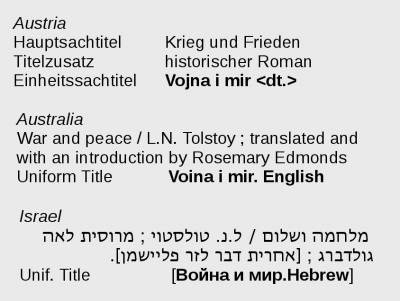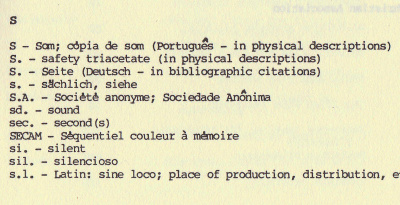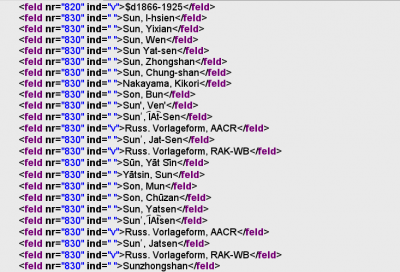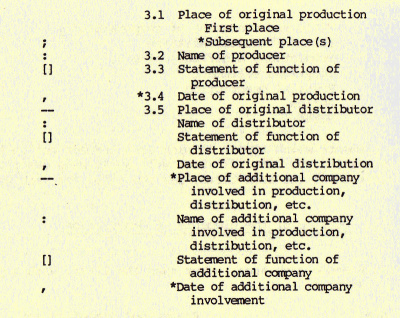Difference between revisions of "Titles and proper names"
From filmstandards.org
(→Why some conventions are more useful than others) |
(Correction to page sequence in footer) |
||
| Line 66: | Line 66: | ||
{| height="20px" width="100%" | {| height="20px" width="100%" | ||
|- style="text-align:center; " | |- style="text-align:center; " | ||
| − | |<span style="color:#808080"> • Previous: [[Where to look for suitable element vocabularies]] • Up: [[TC 372 Workshop Compendium|Contents]] • Next: [[Example: | + | |<span style="color:#808080"> • Previous: [[Where to look for suitable element vocabularies]] • Up: [[TC 372 Workshop Compendium|Contents]] • Next: [[Example: Pancéřové Auto / Das Panzerauto]] • </span> |
|- | |- | ||
|} | |} | ||
Latest revision as of 12:20, 26 October 2011
From the TC 372 Workshop Compendium
Why some conventions are more useful than others
This is a classic domain of cataloguing rules. Many of the conventions laid down in compendia such as the AACR can be expected to remain useful in the future. Some, however have turned out to be less adequate for an all-digital, networked information environment.
 From searches via gateway: http://www.ubka.uni-karlsruhe.de/kvk.html |
Rules for uniform titles and for preferred names have been developed in the context of national bibliographic systems. When used internationally, these concepts become meaningless since each language community can (and often does) have its own preferences. Moreover, databases can provide users with an unlimited number of access points which means that these do not have to be determined in advance. Where a uniform title serves the purpose of identifying a work existing in many manifestations, it corresponds to the identifying title in EN 15907. |
| • Previous: Where to look for suitable element vocabularies • Up: Contents • Next: Example: Pancéřové Auto / Das Panzerauto • |


